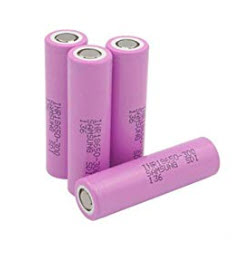(Answer requested by Sam Jones)
The electrical contacts on batteries (and the cells that make up batteries) are metal; metal can oxidize or otherwise develop a thin layer of surface contamination that reduces the electrical conductivity. This layer may be invisible to the naked eye.
Physically manipulating the battery scrapes away this layer, exposing clean metal and restoring good electrical contact. This can be enough to eke out a small bit of additional run-time in batteries that were nearly dead.
If the battery is held in place by spring clips the “physical manipulation” could be spinning the battery in place, or removing and replacing it.
If the battery is a plug-and-socket unit, unplugging and then reattaching the plug or socket does the same thing.
If you want to enhance the process, remove the battery and gently clean its contacts with a soft pencil eraser, followed by a little rubbing alcohol; let it thoroughly dry, and then return to service.
Two notes: First, although this eke-out-a-little-more-juice is harmless to carbon-zinc, alkaline, and similar non-rechargeable batteries and cells, it’s not good for Li-ion batteries — they should not be run all the way down, if there’s any way to avoid doing to.
Second: If you find yourself needing to do this frequently, that would suggest that you’re using your device in a corrosion-producing environment; there could be other corrosion damage going on, besides on the battery contacts. Consider protecting the device better, or altering the device’s environment to be more electronics-friendly.
Permalink: https://langa.com/?p=4950
![[seperator]](https://i0.wp.com/langa.com/wp-content/uploads/2019/02/SEPERATOR-short-grey.png?resize=104%2C6)
COMMENT / QUESTION on THIS ITEM? See the Comment box at bottom of this page!
NEW QUESTION? Ask here!
(Want free notification of new content? Click here!)

I think batteries, like USB plugs, are four-dimensional. You have to flip them over twice to get back to the same orientation.
Three times.
*facepalm*